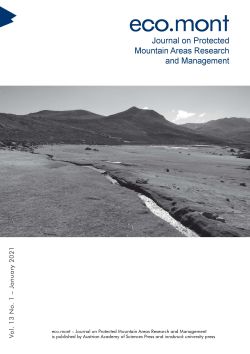
Eco.mont Vol. 13 Nr. 1, pp. 12-21, 2020/12/30
Journal on Protected Mountain Areas Research and Management

The Balkan Peninsula is a biodiversity hotspot and hosts numerous mountain lakes, which offer a refuge for a multitude of species. However, previous pristine habitats have been deeply affected by anthropogenic change, such as non-native fish introductions, which calls for multi-species considerations in the last remaining unaltered habitats. We carried out abiotic measurements and biodiversity assessments in two neighbouring alpine lakes, Lakes Leqinat and Drelaj in the Bjeshkët e Nemuna National Park in Kosovo, in August 2018. Lake Leqinat is a permanent, stratified water body and exhibits weak oxygen depletion below 3 m. Phytoplankton was dominated by chrysophycean, cryptophycean and chlorophycean algae. Zooplankton consisted of five rotifer species and Daphnia longispina. A mark-recapture experiment yielded a population of alpine newts (Ichthyosaura alpestris) of nearly 4 000 adult individuals. In contrast, cold water from the surrounding karst seeps into Lake Drelaj, which is a well-oxygenated temporary lake. Hence phytoplankton and zooplankton biomasses were considerably lower than in Lake Leqinat. Phytoplankton was dominated by cryptophycean, chlorophycean, and bacillariophycean algae. Zooplankton consisted of the diaptomid copepod Mixodiaptomus tatricus, the cladoceran Daphnia rosea, and the anostracan Chirocephalus diaphanus. Conservation efforts should ensure that Lake Leqinat remains unstocked as introduced fish would probably destroy the natural community.
Keywords: Balkan Peninsula, conservation, diversity, Ichthyosaura alpestris, plankton